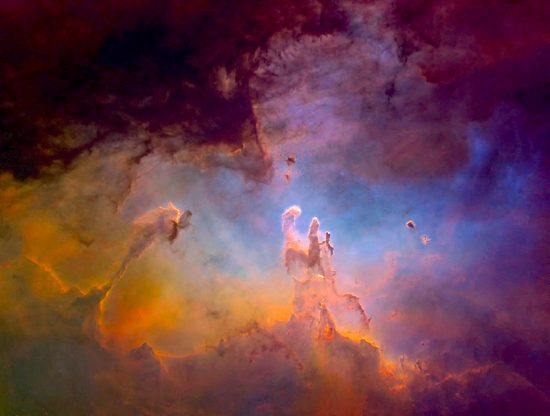
July 6, 2020
Science journals often use terms like “blowing winds” created by exploding stars when they describe nebular formations.
Nebulae are “star factories”, because consensus astronomers think that the X radiation they produce is due to fusion reactions initiated by gravitational attraction. Electric Universe theory proposes that plasma and electromagnetic fields form stars through enormous, diffuse Birkeland current filaments that power galaxies. When electric current density is great enough, the plasma that carries electric charge begins to glow and “pinch” into plasmoids that might eventually become stars.
When electric charge flow is low and the nebular plasma contains a small concentration of dust, only the stars “light up” in arc-mode discharge. Where electrical stress is greater, curling streamers, jets, and any surrounding gas clouds also light up. Light in nebulae is produced by electrical discharge, so X-rays can be generated in stellar arcs. Any nebula could be thought of as a laboratory “gas-discharge tube”, similar to a neon lamp, which emits light because the gas is electrically excited.
When plasma moves through a dust or gas, the cloud becomes ionized and electric charges flow. Electricity generates electromagnetic fields that organize into coherent filaments known as Birkeland currents, as mentioned above. Charged particles spiral along magnetic fields, appearing as electrical vortices. The forces between these spinning Birkeland currents pull them close together and wind them around each other into “plasma ropes”, since they do not merge.
Plasma is composed of charged particles, so the particles are accelerated by electric currents and spiral in the resulting magnetic fields, creating synchrotron radiation that can shine in all high energy frequencies, including X-rays.
In the laboratory, plasma forms cells separated by thin walls of opposite charge called double layers. Could separation of charges also take place in nebulae? That question might require centuries to answer, since the only way to detect a double layer in space is by flying a Langmuir probe through one. However, everywhere in our own Solar System cellular structures separated by double layers abound: the Sun’s heliosphere, comet tails, and magnetospheres are all examples of charge separation in plasma.
Electric Universe advocates assume that plasma behaves in the same way whether in the laboratory, or in space. Double layers resulting from charge separation prompted Nobel laureate Hannes Alfvén to suggest that they be considered their own class of celestial object. If that were so, the mysteries that confound astronomy today would become substantially less quixotic.
Stephen Smith
The Thunderbolts Picture of the Day is generously supported by the Mainwaring Archive Foundation.












